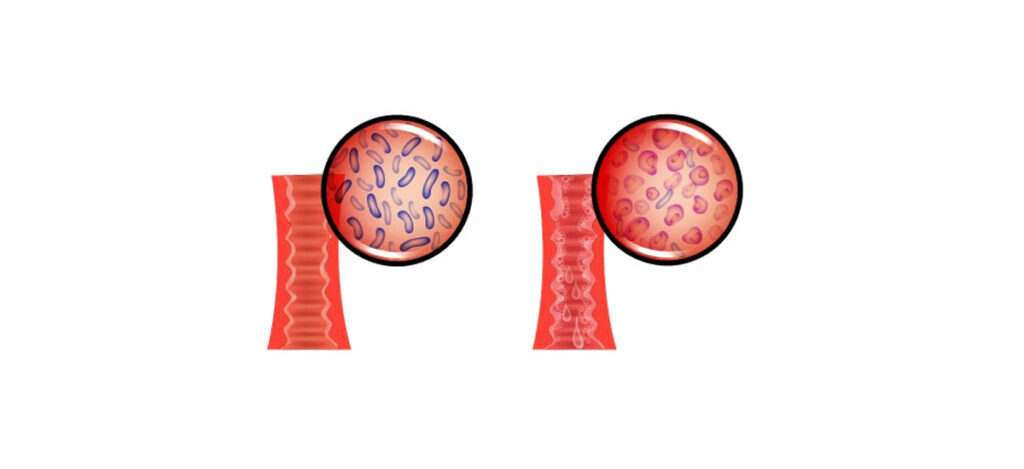Bacterial Vaginosis (BV) Causes, Symptoms & Treatment
Bacterial vaginosis (BV) is a vaginal infection. A change in the bacteria causes it. These are the lactobacilli. They ensure the right acidity level. Yet, in BV, pathogenic anaerobic bacteria multiply. The body reduces the beneficial bacteria, called lactobacilli. This shift lowers vaginal acidity, letting anaerobic bacteria thrive. BV may cause a frothy, thin, grey or white discharge. It has a strong, fishy smell. It is worse after intercourse. Despite common in BV, itching and pain are usually little or absent, but the discharge is a source of worry too many. Soaps or douching worsen the situation. They imbalance the vaginal flora.
Bacterial Vaginosis Discharge

Bacterial vaginitis, or bacterial vaginosis, is a common vaginal infection. Eczema occurs due to a bacteria imbalance. It usually leads to discharge that is not normal for the vagina. It may be thin, greyish white, or have a yellow tint at times. The discharge may be bulky and pale or greenish frothy. It has a very foul smell, especially after sex. BV is not an STI. Yet, it can increase the likelihood of other infections occurring. One needs to get the doctor’s intervention to get the right diagnosis made. The main reason for it is,, treated with prescribed antibiotics. They will help to restore the balance of bacteria.
Is Bacterial Vaginosis a STD?

BV isn’t an STI. However, it increases STIs chance, and it allows people back into the society in case of early release. The lower acidity levels make it more probable to get infected. Studies think that sex alters the types of bacteria within the vagina. This makes it easy for bacteria to grow and increase the likelihood of getting BV. A belief serves as the basis for this. So, it has a bad reputation. Yet, sex can trigger it. Its agents include women who can pass BV to other women through sexual activities. Vaginal bacteriosis occurs due to a change in the vaginal ecosystem. This happens in cycles. It lowers the vagina’s acidity and weakens the immune system.
Bacterial vaginosis in pregnancy
Bacterial vaginosis (BV) in pregnancy is a common cause of complications. But most cases do not. In women with untreated BV, there is a probability of delivering early or a low birth weight baby. Low birth weight baby refers to a baby who weighed below 5 pounds, 8 ounces at the time of his or her birth. Low birth weight, also defined as birth before 37 completed weeks, is not healthy for the baby. CDC says a million pregnant women get BV each year. Some people are at higher risk than others. This particular STD proves vulnerable to it due to hormonal changes which happens to be.
Bacterial Vaginosis Causes

Bacterial vaginosis (BV) is one of the major known vaginal infections affecting women. Vagina has many bacteria. Some of those bacteria are beneficial to it. Lactobacilli are friendly bacteria. They maintain an acid environment. It discourages certain bacteria, called anaerobes, from dominating. Inadequate competition between lactobacilli and anaerobes leads to the development of BV. BV is not an STI. It may not cause it but sex and other factors may increase the chances of it. We will also cover cases of bacterial vaginosis in this paper. We shall also see why some women are at a higher risk of developing it.
1. Disruption of the Natural Bacterial Balance
Several forms of bacteria exist naturally in the vagina. It maintains a healthy environment since it stops the growth of the anaerobes. Don’t eliminate lactobacilli completely. Without them, anaerobes can take over and cause BV. The causes of this disparity are not very well understood. Nevertheless, such a balance of the vaginal microflora can be upset by various causes. It leads to the proliferation of pathogenic bacteria in the body.
2. Sexual Activity
BV is not a sexually transmitted disease. However, it occurs more frequently in women with active sexual life. Risky sex, like having multiple partners or unprotected sex, can cause BV. They can also cause other infections. Numerous sexual partners mean a different set of bacteria colonizes the vagina. This makes it easier for the anaerobes to get in and begin to multiply themselves.
3. Douching and Use of Perfumed Products
Using liquids to clean the vagina douching can lead to death of the healthy bacteria. They prevent infections. Similarly, the scented items such as spray, soap or wipe can cause the vaginal irritation. It reduces lactobacilli let anaerobes to grow.
4. Antibiotics and Vaginal Medications
Some antibiotics cause an imbalance in the body bacteria such as the bacteria ==ing the vagina. Using antibiotics is not improper. But, it is dangerous for lactobacilli and other bacteria. This can let the anaerobes grow and overwhelm the other stomach bacteria. Like the effects on bacterial balance, some vaginal meds may cause similar effects.
5. Intrauterine Device (IUD)
Women using IUD are at a higher risk of developing BV especially form irregular bleeding. An IUD is recognized to alter the intravaginal milieu. It can be used to the multiplication of anaerobes.
Bacterial Vaginosis Symptoms

Bacterial Vaginosis (BV) is an ordinary condition which affects the vagina. It can be without symptoms or may present symptomatic features. Some women may not even experience any symptoms. BV often has no symptoms. But, it can cause discomfort or unsafe conditions if untreated. Listed below are some symptoms you should consider and a brief overview of how to diagnose and treat BV.
1. Abnormal Vaginal Discharge
A frequent sign of BV is a thin, white, or gray vaginal discharge that may differ from normal secretions. This discharge may appear and persist. It indicates an imbalance in vaginal bacteria.
2. Strong Odor After Sex
A strong, fishy odor is a notable symptom, especially after sex. This smell occurs when vaginal discharge mixes with semen and is often a clear sign of BV.
3. Vaginal Discomfort
BV can cause itching, irritation, or a burning sensation in the vagina and vulva. It might also cause a burning feeling when urinating. This would make daily activities uncomfortable.
4. Burning Sensation
A burning sensation during urination is also associated with BV. This discomfort can cause painful urination. It may or shows vaginal inflammation.
5. Pain During Intercourse
Some women with BV report experiencing pain or discomfort during sexual intercourse. This symptom can harm intimate relationships and cause anxiety about sex.
6. Swelling or Redness
Inflammation can cause the vulva to swell and turn red. This indicates irritation in the area. This visual sign can sometimes be with other symptoms, making it more plain.
Bacterial Vaginosis Treatments

Most women experience bacterial vaginosis at some point in their lives. Antibiotics can treat it. Seek the services of a doctor for a proper check up and proper management. Impossible to take out the adverb.
Antibiotic Treatments
Metronidazole: It comes as 5–200mg oral tablets (Flagyl) and a 200mg vaginal gel (Metrogel-Vaginal). They include dizziness, headaches, and severe nausea, and vomiting if the patient takes this medication with alcohol.
Tinidazole: Another effective drug for treating BV is an oral medication (Tindamax).
Clindamycin: Cleocin and Clindesse are topical creams. Insert them into the vagina.
These medications tend to clear BV in two to three days. To avoid a recurrence, one must complete the prescribed one-week treatment.
Non-Antibiotic Options
So, there are many medications in pharmacies besides antibiotics. You can buy these from a chemist without a prescription. Please always nod to our doctor. They can give us a broad direction based on current cases.
How to Prevent Bacterial Vaginosis

Bacterial Vaginosis (BV) is common. You can take steps to lower your risk of it. Here are some effective strategies:
1. Practice Safe Sex
BV is not an STI. But, sex can raise your risk of it. To reduce this risk, limit your sexual partners. Choose a partner who is also monogamous. Always use condoms during intercourse. They prevent pregnancy and protect against STIs.
2. Avoid Douching
Douching alters the normal balance of bacteria in the vagina. Some destroy the friendly bacteria that protect against germs in the body. Experts recommend that women planning a family avoid douching completely.
3. Maintain Proper Hygiene
You should wash your vaginal area with warm water only and without the use of soap to prevent skin rash. To avoid germs, always clean from the ankles down if you need to urinate. If you have a bowel movement, clean from the knees down. This also minimizes the chances of introducing bacteria.
4. Minimize Irritation
To avoid more irritation, do not wear nylon underwear. It assists to maintain the area, well drained and cool. Do not use hot tubs or whirlpool spas because they also cause skin irritation.
5. Regular Check-ups
One should have an STI check every six months or earlier if you are sexually active with many people. If one thinks they have a BV, they should go see their general practitioner. This is crucial if you are pregnant, as this can lead to many complications. The following can help reduce your risk of BV: They will improve your vagina’s health.
Share this content:


